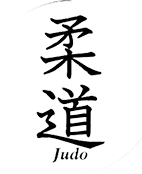genetic judoka wrote:I agree that I am in fact nowhere near being "old". I'm still quite young. but one doesn't need to be on the verge of retirement to start saving for it do they? as such I don't find it unreasonable to start thinking about what path my judo will take in my later years now, while I'm still young enough to navigate.
and Hanon sensei, I agree with you on many points, and disagree on others.
I find sutemi waza to be among the easiest techniques if the goal is to bring the match to the mat for newaza, and far from the easiest if the goal is to bring uke to the mat with a score of ippon. just like standing throws they take proper kuzushi and debana. in fact for them to be pretty it often takes more kuzushi and better debana than a standing throw.
when I was still extremely new (as opposed to still kinda new, like I am now) I was taught a fair amount of sutemi waza. one of the instructors at my club has a fair amount of injuries, and as such they developed a very strong sutemi waza skill set. when I'd ask "what would you do if your partner does x" their answer was always "well what I would do is y" with "y" usually being some form of sutemi waza. as such that started to become the standard answer for me. I wasn't always getting good throws, but I was getting my opponent to the ground where I wanted them. and with my goals back then, I considered it a success. then the head sensei at my club (a fellow just as old-school as yourself if not more so) saw where I was going with my training, and one day he sat me down and explained the idea that to get good at judo, one must focus on the standing throws where uke keeps his balance, specifically because they're more difficult. so I changed my game plan drastically and I am much better off for having done so. and while by no means would I claim that I've already mastered the standing waza, it's not like I skipped it and went right to the "easy" stuff.
however I have to disagree that sutemi waza is harder on the legs. for a throw like, say, seoi nage; I have to squat down low, whereas for a throw like uki waza, I'm more or less sitting down in front of uke with one leg extended. now of course there's more to it than sitting down while holding on, but in term of the stresses my joints must bear, I think uki waza is the easier of the two. like I say, when my knees are hurting I will sometimes go entire classes doing nothing but sumi gaeshi and yoko otoshi in randori, and it feels just fine. whereas if I were to try to do standing forward throws those days it would be miserable.
Hiya,
We are all different though the same, its one of those zen riddles lol.
If one has a sensei, as you thankfully do, then he or she will guide you to make the best of what you have.
Remember we all have different capacities to learn judo. I reached my capacity some years ago in the physical form and will never grade again. Same for us all. If you are having the success you require with sutemi and your sensei is happy with your progress this is the end of the conversation so to speak.
Most posts I write are a generalisation of a linear path. Each of us will deviate from that path according to our own abilities and the instruction we are given.
IN GENERAL it is wise to learn the non sutemi before studying the sutemi for the reasons I have given in my previous post. There will be exceptions and this is as it should be.
If you suffer knee problems and you are 6' 52 as I understand you are then sumi gaeshi may be a challenge?
I cant see your judo so cant asses what route you may take to improve and ensure your safety.
I think we also have some confusion, perhaps, between a sutemi waza and what is know today as a 'take down' they are certainly not one and the same.
Nice to learn you are back on the tatami. Please do look after yourself. BTW you, at 26, are not young you are very young and remember age is very much a mental attitude. I am not old but the milaage on the clock is massive. Its all relative.
Regards,
Mike





 I was thinking for sometime about asking if and/or what age seoinage becomes a young mans throw and if you enjoy quite similar at 53 with those prior injuries, that helps alot with my question.
I was thinking for sometime about asking if and/or what age seoinage becomes a young mans throw and if you enjoy quite similar at 53 with those prior injuries, that helps alot with my question.